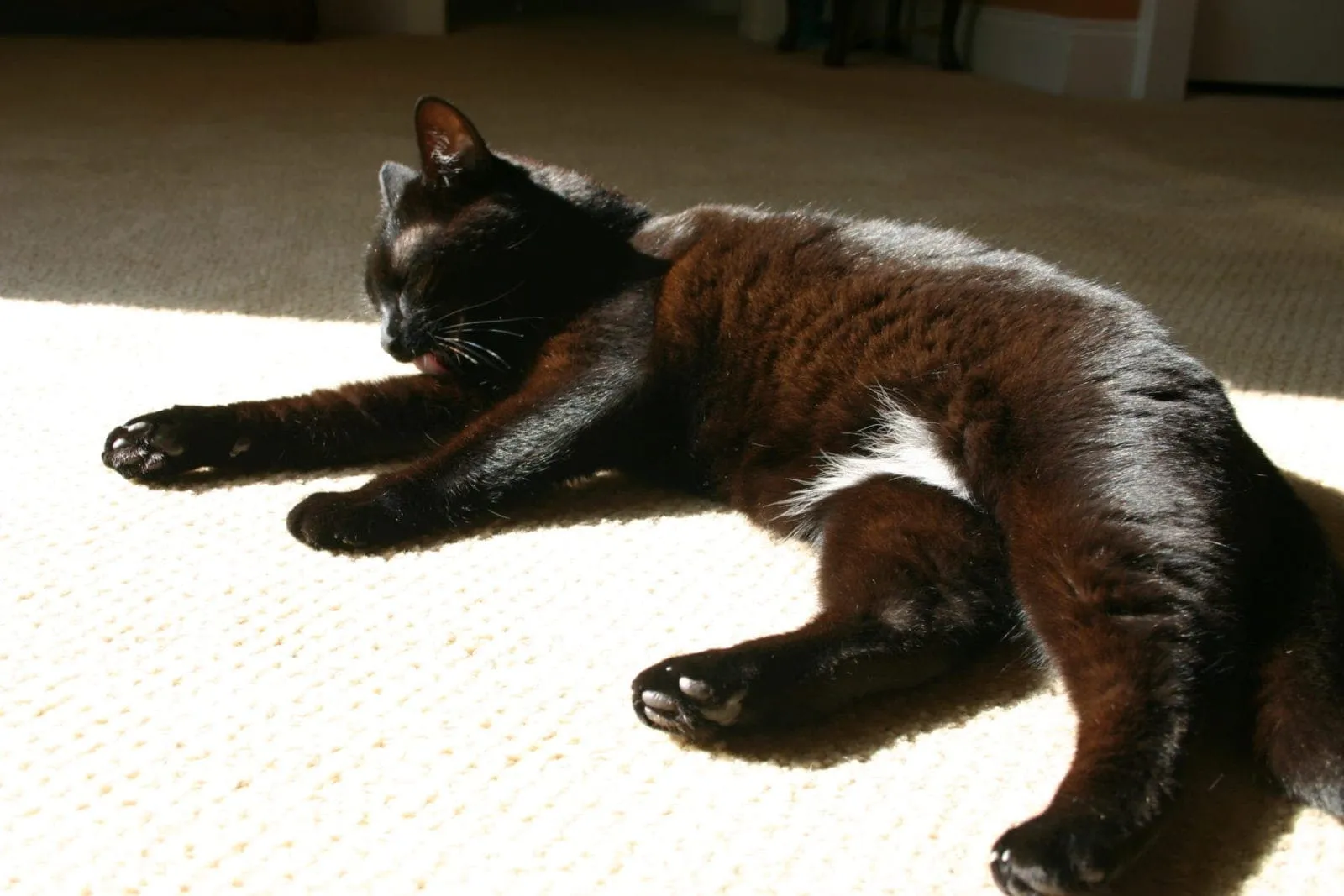Planning a trip, whether it’s a short weekend getaway or a long-awaited vacation, often brings a critical decision for pet parents: what’s the best arrangement for your beloved cat? While some felines might be comfortable traveling with their humans, most prefer the familiar comfort of their own environment. The choice between professional Pet Sitter Boarding services or an in-home pet sitter is paramount to ensuring your cat’s well-being and minimizing stress during your absence. Cats are territorial creatures who thrive on predictability, making their own home, bed, and an uninterrupted dinner schedule their top preference.
The decision for cat care while you’re away isn’t just about convenience; it’s about providing a secure and low-stress experience. Understanding the nuances of each option can help you make an informed choice that prioritizes your cat’s physical and emotional health. Many cat owners are now exploring various solutions for professional cat care, including [pet sitting and walking](https://dogcarestory.com/pet-sitting-and-walking/) services that offer personalized attention right in their home.
The Risks of Leaving Your Cat Home Alone
The perception that cats are “low-maintenance” often leads owners to believe their feline friends can manage alone for a few days with just ample food and water. However, this misconception can put your cat at significant risk. Leaving a cat unsupervised for extended periods, even just a weekend, can lead to serious problems such as undetected medical emergencies, house fires, floods, or electrical failures. Even minor health issues can escalate without immediate attention. A cat accustomed to daily interaction and a consistent routine can experience immense stress and anxiety when left in a suddenly empty and quiet home. This is particularly true for cats with owners who work from home or in multi-person households where constant activity is the norm.
Cats are not simply low-maintenance substitutes for dogs. Their health and welfare should never be compromised for the sake of human convenience. Extended periods of solitude can disrupt their emotional stability, lead to destructive behaviors, or mask underlying health concerns. Understanding [pet sitter business](https://dogcarestory.com/pet-sitter-business/) models can highlight the comprehensive care and peace of mind a professional service provides compared to leaving a cat completely unsupervised.
Evaluating Boarding Facilities for Your Cat
For some cat owners, a boarding facility is the chosen option. The quality of these establishments can vary widely, from excellent to subpar. If you decide to board your cat, a personal tour of the facility is non-negotiable. For a cat, being confined in a cage, surrounded by unfamiliar animals, strange sounds, new smells, and overwhelming sights, can dramatically elevate their stress levels.
When touring a boarding facility, consider it from your cat’s perspective. Look for facilities that offer “cat condos” with elevated perches and hiding places, as these features can significantly enhance a cat’s sense of security. Pay close attention to:
- Aromas and Noise: How does the facility smell? Is the environment excessively loud or chaotic?
- Cage Setup: Are cat cages positioned so that cats are staring directly at each other? This can be a major source of stress.
- Space and Hygiene: Is the cage or condo sufficiently large to ensure that the food bowl is not placed directly next to the litter box?
- Staff Interaction: What kind of interaction do the staff provide? Do they engage in playtime, petting, or holding?
- Anxiety Reduction: What measures are in place to help reduce fear and anxiety among the boarded cats?
- Emergency Protocols: Is a veterinarian on-call for emergencies? How is the facility monitored during the night?
- Enrichment: What type of enrichment activities are offered to keep cats stimulated?
Some boarding facilities excel in providing enriching environments and excellent care, while others can be stark and depressing. Platforms like [petbacker singapore](https://dogcarestory.com/petbacker-singapore/) can sometimes offer insights into different boarding options and their reviews.
 A cat looking out of a carrier, contemplating pet sitting or boarding
A cat looking out of a carrier, contemplating pet sitting or boarding
The Comfort and Benefits of In-Home Pet Sitting
Hiring a professional pet sitter or arranging for a trusted friend or neighbor to care for your cat at home is often the ideal solution for many felines. This approach offers the profound security of knowing your cat remains in their most comfortable and familiar surroundings. While your absence might still be unsettling from your cat’s point of view, they at least don’t experience the added trauma of losing their territory. This sense of security can be the deciding factor in whether your cat navigates your absence with minimal stress or succumbs to significant anxiety. For many cats, even the most well-run boarding kennel can be terrifying. While state-of-the-art facilities exist, nothing truly compares to the familiarity of home for a cat. If it aligns with your budget, investing in an experienced pet sitter is highly recommended, or collaborating with a reliable friend or neighbor who genuinely cares.
Due diligence is essential when entrusting someone with your cat’s care. Avoid simply asking the neighborhood teenager to drop in once a day to refill food. You need a dedicated individual who will prioritize your cat’s safety, meticulously clean the litter box, maintain feeding schedules, monitor eating and litter box habits, and engage in interactive play (if your cat enjoys it) to minimize the stress of your absence. A pet sitter who dedicates time to interact with your cat can significantly help manage their stress levels. A “drive-by” caretaker, who spends mere minutes in your home, is unlikely to notice critical changes like a lack of urination, a limp, or an eye injury. Such superficial care is barely an improvement over leaving your cat completely alone. Therefore, select a pet sitter who is genuinely invested in the welfare of every client, or a friend/neighbor who can commit the necessary time to ensure your cat’s safety and emotional well-being. Considering options like [become a pet sitter uk](https://dogcarestory.com/become-a-pet-sitter-uk/) can also offer insights into the professionalism and dedication expected from high-quality pet care providers.
Optimal Pet Sitter Visit Frequency
Once you’ve decided on in-home care with a top-notch pet sitter or a highly trusted friend, the next crucial question arises: how many visits per day are truly necessary? While many owners assume a single daily visit is sufficient, it is strongly recommended that your cat receives at least two visits per day.
Maintaining your cat’s routine is paramount. If your cat is accustomed to scheduled meals, the pet sitter should adhere to these times. A cat used to eating three or four times a day can experience significant stress and digestive upset if suddenly limited to one or two meals, compounded by the family’s absence. Eating a large quantity in one sitting, instead of multiple smaller meals, can also be unhealthy for their digestion.
Monitoring litter box activity is equally vital. Twice-daily visits ensure that any signs of diarrhea, constipation, bloody urine, or a complete lack of litter box use are noticed immediately, allowing for prompt intervention. Regular visits also guarantee consistent litter box hygiene. Cats are meticulous creatures; having to navigate soiled litter can be a major source of stress for them if they are used to a pristine environment.
 A relaxed cat lounging comfortably indoors
A relaxed cat lounging comfortably indoors
More than one daily visit also provides much-needed activity and interaction for your cat, which is essential for maintaining minimal stress levels. A morning visit can include opening curtains, light playtime, feeding, and litter cleaning, while an evening visit might involve closing curtains, adjusting lighting, and a dedicated petting or play session. These predictable interactions and even the ambient sounds of a normal household, such as a television, radio, or music from a smart speaker, provide a comforting sense of security. Crucially, a twice-daily check-in means that if any medical issue arises, it is far less likely to go unnoticed for a full 24 hours. Early detection can make a significant difference in outcomes, potentially saving a [puppy vet visit cost](https://dogcarestory.com/puppy-vet-visit-cost/) for more serious complications later.
Conclusion
The decision between a pet sitter boarding facility and an in-home pet sitter is one that requires careful consideration and planning. While high-quality boarding facilities can offer a safe environment, the familiar comforts and consistent routine of home, delivered by a dedicated pet sitter, often provide the least stressful experience for most cats. Prioritizing your cat’s well-being by choosing a trustworthy, attentive caregiver and ensuring adequate visit frequency can significantly impact their emotional and physical health during your time away. Taking these extra precautions to minimize stress and ensure safety will make your absence a positive, rather than negative, experience for everyone involved. For further expert insights on cat behavior and care, consider the works of renowned cat behaviorist Pam Johnson-Bennett.
If you have a question regarding your cat’s health, please contact your veterinarian. This article is not intended as a replacement for your cat’s veterinary care.
